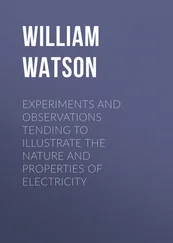Mark Changizi - Harnessed - How Language and Music Mimicked Nature and Transformed Ape to Man
Здесь есть возможность читать онлайн «Mark Changizi - Harnessed - How Language and Music Mimicked Nature and Transformed Ape to Man» весь текст электронной книги совершенно бесплатно (целиком полную версию без сокращений). В некоторых случаях можно слушать аудио, скачать через торрент в формате fb2 и присутствует краткое содержание. Год выпуска: 2011, Издательство: Perseus Books Group, Жанр: Старинная литература, на английском языке. Описание произведения, (предисловие) а так же отзывы посетителей доступны на портале библиотеки ЛибКат.
- Название:Harnessed: How Language and Music Mimicked Nature and Transformed Ape to Man
- Автор:
- Издательство:Perseus Books Group
- Жанр:
- Год:2011
- ISBN:нет данных
- Рейтинг книги:5 / 5. Голосов: 1
-
Избранное:Добавить в избранное
- Отзывы:
-
Ваша оценка:
- 100
- 1
- 2
- 3
- 4
- 5
Harnessed: How Language and Music Mimicked Nature and Transformed Ape to Man: краткое содержание, описание и аннотация
Предлагаем к чтению аннотацию, описание, краткое содержание или предисловие (зависит от того, что написал сам автор книги «Harnessed: How Language and Music Mimicked Nature and Transformed Ape to Man»). Если вы не нашли необходимую информацию о книге — напишите в комментариях, мы постараемся отыскать её.
Harnessed: How Language and Music Mimicked Nature and Transformed Ape to Man — читать онлайн бесплатно полную книгу (весь текст) целиком
Ниже представлен текст книги, разбитый по страницам. Система сохранения места последней прочитанной страницы, позволяет с удобством читать онлайн бесплатно книгу «Harnessed: How Language and Music Mimicked Nature and Transformed Ape to Man», без необходимости каждый раз заново искать на чём Вы остановились. Поставьте закладку, и сможете в любой момент перейти на страницу, на которой закончили чтение.
Интервал:
Закладка:
Encore 8: “Medium Encounters”This Encore section concerns regularities in how movers distribute themselves in distance from a listener, and makes predictions about how frequently music makes use of various loudness levels.
Summary
In this chapter and the previous chapter, we have covered a great deal of musical ground (and we will cover still more in the Encore chapter). In Chapter Three, we presented general arguments for the music-is-movement theory, clearing three of the four hurdles for a theory of music: why we have a brain for music, why music should be emotionally moving, and why music should elicit movements in us. In this chapter, we have addressed the fourth hurdle, explaining the structural features of music. As I hope readers can see, there is a wealth of suspicious similarities between music and the sounds of people moving—42 suspicious similarities—which are summarized in the table below.
ection
uman movers
usic
. Drum Core
ootsteps areregularly repeating.
he beat is rgularly repeating.
. Drum Core
ootsteps arethe most fundamental auditory feature of human movement.
he beat is te most fundamental quality of music.
. Drum Core
ootsteps ten to be around one to two per second.
eats tend tobe around one to two per second.
. Drum Core
ootsteps usully are not as regular as a metronome.
eats are oftn looser than that of a metronome.
. Drum Core
eople’s foottep rates lower prior to stopping ( ritardando ).
he number ofbeats per second lowers prior to musical endings ( ritardando ).
. Gangly Nots
ootsteps areusually higher-energy collisions than between-the-step bangs.
n-beat notesusually have greater emphasis than off-beat notes.
. Gangly Nots
n addition t footsteps, people’s gangly limbs make sounds in between the footsteps.
n addition t notes on the beat, music has notes in between the beats.
. Gangly Nots
he between-te-steps gangly bangs are time-locked to the steps.
he between-te-beats notes are time-locked to the beat.
. Gangly Nots
he pattern o steps and between-the-steps gangly bangs is crucial to identifying the mover’s behavior.
he pattern o on-beat and off-beat notes (the rhythm) is crucial to the identity of a song.
0. Gangly Noes
uman-mover git sounds (steps and between-the-steps banging ganglies) have rings, and often pitches.
usical notesoften have pitches.
1. The Lengt of Your Gangly
eople typicaly make about zero or one between-the-step bangs.
usic typicaly has about one off-beat note per beat.
2. Backbone
ootsteps canbe highly variable in intensity, and we perceptually sense a step even when inaudible.
eats are fel even when no note occurs on a beat.
3. Backbone
t is not merly the temporal pattern of gait sounds that identifies a mover’s behavior. It matters which sounds are on the beat.
he feel of amusical rhythm does not depend solely on the temporal pattern, but on where the listener interprets the beats to be.
4. The Long nd Short of Hit (Encore)
eople are liely to make a between-the-steps gangly bang near the middle of a step cycle.
ff-beat note most commonly occur near the middle of a beat cycle.
5. The Long nd Short of Hit (Encore)
eople are moe likely to make a between-the-steps gangly bang just before a step than just after. (“Long-shorts” are more common.)
ff-beat note more commonly occur in the second half of a beat cycle (just before the beat) than in the first half (just after the beat).
6. Measure o What? (Encore)
atterns of fotstep emphases are informative as to the mover’s behavior.
ime signatur matters to the identity of music.
7. Gangly Chrds
ait sounds hve temporal patterns and pitch patterns (due to the pitches of the constituent ganglies).
usic typicaly has rhythm chords.
8. Gangly Chrds
mover’s temoral pattern of hits is matched to the pitch pattern (because the pitches are due to the constituent gangly bangs).
hords (e.g.,as played with the left hand on the piano) have the same time signature as the rhythm.
9. Gangly Chrds
ootsteps ten to have lower pitch than other gangly bangs.
or chords, te pitch played on the beat tends to be lower than that played off the beat.
0. Gangly Chrds
he pitches aong gangly bang sounds can occur simultaneously (unlike Doppler shifts, see below).
hords are ofen struck simultaneously.
1. Fancy Foowork (Encore)
hen people trn, they tend to have more complex gangly bangings.
hen melodic ontour rises or falls, the rhythm tends to be more complex.
2. Distant Bat (Encore)
eople that ae nearer have more audible gangly bangs per step.
ouder music as more notes per beat.
3. Choreograhed for You
oppler shiftpitch contours and loudness contours matter for the appropriate visual-auditory fit of a human mover.
elodic contors and loudness contours (not just rhythm) are relevant for choreographers in creating visual movements to match music.
4. Why PitchSeems Spatial
oppler pitchs change continuously over time.
elodic contor tends to change fairly continuously.
5. Only One inger Needed
mover is ony moving in one direction at any moment, and thus has only one Doppler shift for a listener.
elodies are nherently one pitch at a time.
6. Home Pitc (Encore)
or a mover a constant speed, Doppler shifts are confined to a fixed range, the highest (lowest) corresponding to heading directly toward (away from) the listener.
elodies tendto be confined to a fixed range of pitches called the tessitura.
7. Home Pitc (Encore)
eople tend t move in all directions relative to a listener, and to fairly uniformly sample from Doppler pitches within the Doppler range.
elodies tendto sample fairly uniformly across their tessitura.
8. Home Pitc (Encore)
itches at th top and bottom of the Doppler range tend to have longer duration (due to trigonometry).
elodies tendto have longer-duration notes when the pitch is at the top or bottom of the tessitura.
9. Fast Temp, Wide Pitch (Encore)
aster movershave a wider Doppler pitch range.
aster tempo usic tends to have a wider tessitura.
0. Fast Temp, Wide Pitch (Encore)
aster moversdo not have a wider range of proximity-based loudnesses.
aster tempo usic does not tend to have a wider range of loudness.
1. Human Cures
eople take aout two steps to make a right-angle turn.
usic takes aout two beats to traverse the top or bottom half of the tessitura (which corresponds to a right-angle turn).
2. Musical Ecounters
he most geneic kind of human encounter is the Hello–HowAreYou–Good-bye, involving a circling movement beginning when a mover headed away begins to turn toward the listener. The Doppler pitch contour is that of a hill, with flatter slopes at the bottom and top.
elodies in msic have a tendency to be built out of pitch hills.
3. Musical Ecounters
he generic ecounter tends to be around eight steps (two steps per right-angle turn).
Читать дальшеИнтервал:
Закладка:
Похожие книги на «Harnessed: How Language and Music Mimicked Nature and Transformed Ape to Man»
Представляем Вашему вниманию похожие книги на «Harnessed: How Language and Music Mimicked Nature and Transformed Ape to Man» списком для выбора. Мы отобрали схожую по названию и смыслу литературу в надежде предоставить читателям больше вариантов отыскать новые, интересные, ещё непрочитанные произведения.
Обсуждение, отзывы о книге «Harnessed: How Language and Music Mimicked Nature and Transformed Ape to Man» и просто собственные мнения читателей. Оставьте ваши комментарии, напишите, что Вы думаете о произведении, его смысле или главных героях. Укажите что конкретно понравилось, а что нет, и почему Вы так считаете.












